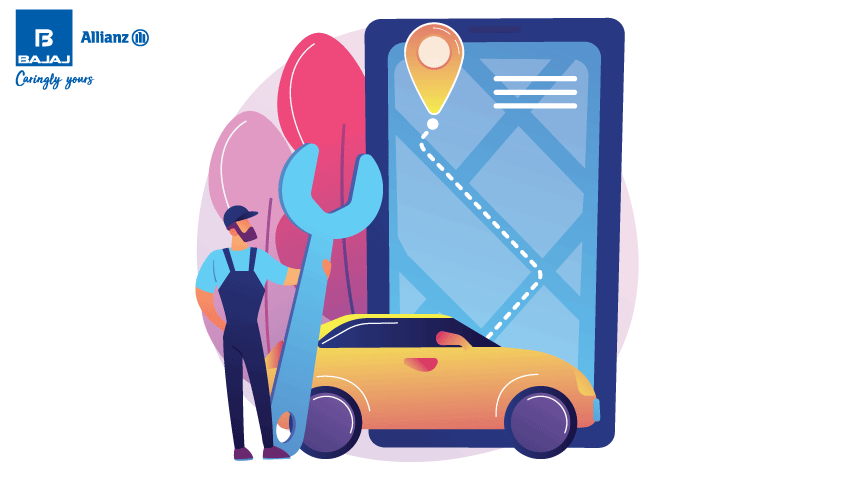Whether you are a beginner or a skilled driver, parallel parking is one aspect of driving that can intimidate anyone.
For those who need to be more familiar with the concept, it refers to parking one’s car in a way that it is parallel to the road and in line with the front and rear vehicles of a parking spot. It also includes parking the car in conjunction with the traffic on that side of the road.
It can be difficult to estimate the exact space and dimensions needed to drive the car, as well as to align the car with the rest. However, with the right practice and navigational techniques, one can learn how to parallel park easily.
Parallel Parking - A Step-by-Step Guide
Once you know how to approach parallel parking, it becomes quite easy. With that in mind, here are the four steps to park parallelly:
1. Find the right parking spot
To parallel park the right way, it is essential to find the right spot. Ideally, the parking space should be one and a half times the length of your car. This can help you ensure that the spot has enough space to park your car.
2. Move parallel to the front car
Once you have found the right spot between two cars, you need to move your car parallel to the car that is ahead of the chosen parking spot. Ensure that adequate distance is kept between your car and the other one. Additionally, to state the obvious, your car must be facing the same direction as the other cars.
3. Reverse your car into the spot
Next, reverse the car into the parking spot until your car’s middle is adjacent to the front car’s rear bumper. This will allow your car to start moving into the actual parking spot. If you have maintained enough distance in the second step, you will not have to worry about any contact between the two vehicles.
Also, keep an eye on the car behind your parking spot to avoid bumping into it.
4. Place your car into position
Now, you need to steer your car towards the parking spot. Move your steering wheel towards the right while continuing in reverse gear. In case you are parking towards the left, steer towards the left. Keep steering carefully until your car is in line with the other vehicles, and parallel to the wall.
5. Ensure alignment
The last thing you need to do is make final checks about where your car is placed. Make sure it is at an equal distance from both cars. If it is not, steer the car accordingly. This will also ensure that you can remove the car from the spot easily when required.
Knowing how to parallel park can ensure that you have a safe and secure ride. Another aspect of ensuring this is to set in place a
car insurance policy. With the right comprehensive insurance plan, your car receives financial protection from a variety of events and risks that can damage it.*
Claims are subject to terms and conditions set forth under motor insurance policy.
Importance of Car Insurance for Your Four-Wheeler
If you own a car, you may already have a third-party car insurance policy. However, when you renew the car insurance plan, consider switching to a comprehensive plan for the following reasons -
1. Third-party liabilities are covered*
With a comprehensive car insurance plan, you get coverage for third-party liabilities as well. So, you get to meet legal compliances while also being covered against any liabilities that can arise due to an accident.
2. Coverage against natural disasters*
Unfortunately, natural disasters are becoming increasingly common these days. Whether it is floods, storms, landslides or earthquakes, their frequency is increasing. While you cannot control when and where these events occur, you can control the kind of damage they can inflict on your finances.
With a comprehensive
motor insurance plan, your car gets financial protection against the damage caused due to these natural disasters.
3. Coverage against man-made calamities*
Imagine you have safely parked your car in the spot after following the above steps. However, when you come back, you notice that it is not there anymore. Car theft is also a common occurrence these days. With a comprehensive motor insurance plan, you can receive financial support in such situations.
4. Additional protection in the form of add-ons*
When you buy or
renew car insurance , you may want to consider adding add-ons to your plan. These can include engine protector add-on, zero depreciation add-on, 24/7 assistance add-on, and more. By paying a small extra premium, you can enlarge your coverage to a great extent.
Claims are subject to terms and conditions set forth under motor insurance policy.
To know what your premium could be after the addition of add-ons, you can use a
car insurance calculator.
*Standard T&C apply.
Disclaimer: The content on this page is generic and shared only for informational and explanatory purposes. It is based on several secondary sources on the internet and is subject to changes. Please consult an expert before making any related decisions.
Insurance is the subject matter of solicitation. For more details on benefits, exclusions, limitations, terms, and conditions, please read the sales brochure/policy wording carefully before concluding a sale.
 Service Chat: +91 75072 45858
Service Chat: +91 75072 45858


